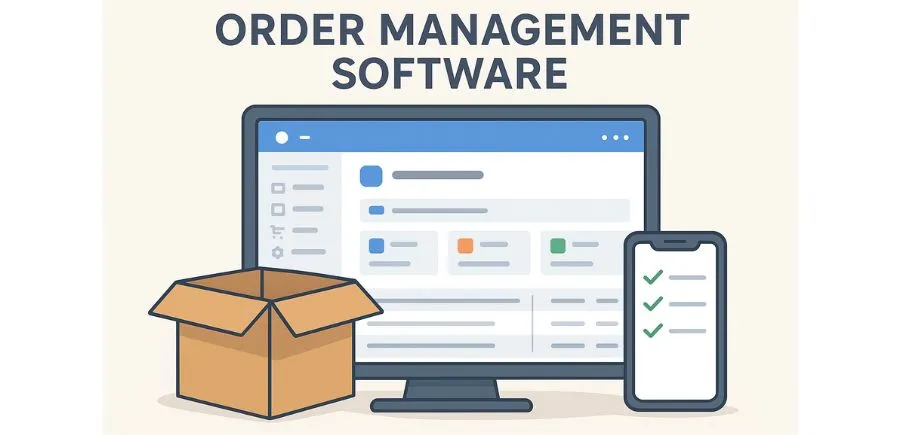Order management software is now central to modern e-commerce because it allows businesses to handle orders, organize their belongings, and get items out to customers on multiple platforms. Since eCommerce, omnichannel retailing, and global supply chains are growing rapidly, the right OMS is key to meeting customers’ requirements, lowering mistakes, and scaling your activities. We have carefully chosen the tools on the top 10 best order management software platforms list in 2025 because of how well they perform, their ability to grow with a business, how seamlessly they integrate, how simple they are to use, how fully automated they are, and the excellent customer support they provide.
Order processing and customer satisfaction depend on using such tools by business owners, marketers, inventory managers, warehouse staff, developers, and IT teams. If you have a small online shop or control a large business, you can use these order management software to get functions that fit your requirements.
We assessed the platforms by looking at their user interface, how easy it is to use them, multichannel support, automated tools and workflows, order and inventory tracking, various pricing options, and what customers have said. We took into account whether the integration with well-known eCommerce, ERP, shipping, and payment services is possible for each tool. Whether someone is running a small business or a large one, the options in this list such as Zoho Inventory, Veeqo, Salesforce, and SAP Commerce Cloud can help them improve order placement and look ahead with assurance.
Criteria for Selecting the Best Order Management Software
- Ease of use: It is important for the software to be easy to use and find things in, so teams from sales, logistics, and customer service can pick it up quickly.
- Multichannel integration: Managing orders and inventories from one place relies on the ability to join multiple types of sales channels.
- Automation capabilities: With the help of top solutions, repetitive tasks such as order routing, generating invoices, shipping, and updating stocks are done automatically to save your team’s time and prevent errors.
- Real-time inventory management: It must be possible to track the actual stock in each warehouse in real-time, which prevents possible mistakes from occurring.
- Scalability and flexibility: A good order management software should grow with the business. It has to handle extra users, new orders, and even new sales channels without causing problems for the system.
- Integration with other tools: To have a smooth workflow, a company’s e-commerce software must be up to date with all required ICT standards.
- Reporting and analytics: Keeping an eye on orders and problems is made easier with the help of dashboards and customized reports compared to no dashboards and standard reporting.
- Customer support and training: Support, instruction, and easy-to-follow documents are necessary for a company to use the system without much difficulty.
- Cost and value for money: How much you charge should fit the features of the product and the company size. Ensure that both models of licensing allow you to see the exact worth of the service.
- User feedback and reputation: Good reviews and proven success in practical cases prove that it can be trusted and relied upon by businesses from various sectors.
List of 10 Best Order Management Software
1. Salesforce Order Management
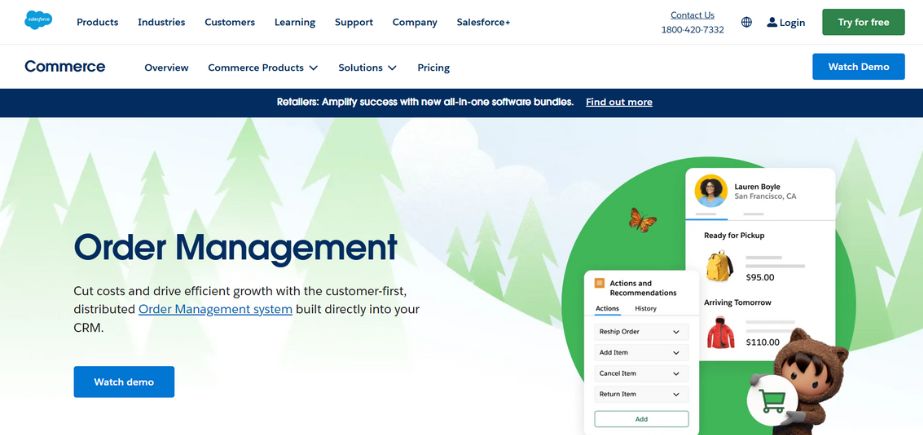
Salesforce Order Management is designed for companies that manage orders on different sales channels and need a solid system to handle the process. Being part of the Salesforce system, it gives you real-time stock control, the use of AI for insights, and convenient adjustments to your workflows. All tasks like fulfillment, shipping, making payments, and handling returns can be done through one platform.
The company lets customers enjoy the same service experience, online, in a store, or using a mobile device. Thanks to being connected to CRM, the solution lets your teams work together around customers, know every customer’s status, and access all the details they need. When used by large organizations, it improves how they run their operations and communicate with customers after making a purchase.
Key Features:
- Real-time inventory management
- Omnichannel order tracking
- Customizable fulfillment workflows
- AI-powered order insights
- Integrated with Salesforce CRM and Service Cloud
Pros:
- Deep integration with Salesforce suite
- Scalable for large enterprises
Cons:
- Expensive for smaller businesses
- Steep learning curve
Pricing:
Custom pricing (based on Salesforce Commerce Cloud usage)
Who should use it?
Large enterprises with complex, omnichannel sales processes already using Salesforce.
2. NetSuite Order Management (Oracle)
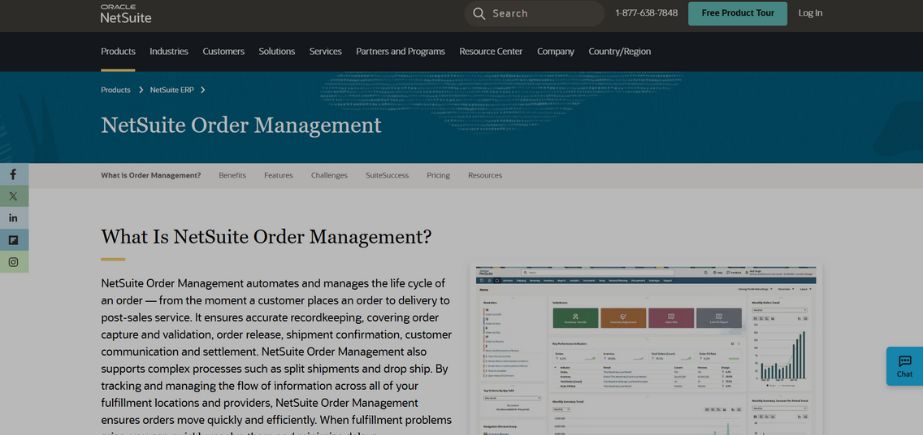
Thanks to the Order Management section, NetSuite, a component of Oracle’s cloud-based ERP, manages even the most intricate stage of processing an order. It helps you observe and manage sales, inventory, delivery, and returns from multiple channels in one place. The system guarantees that every order is recorded, and provides the right price and timely inventory changes.
With automated tasks and billing, workers can avoid the waste of time and the chance of error. Yet, financial integration across countries and areas makes it simpler to run global operations and obey regulations. Mid-sized and large enterprises can use it to improve back-office tasks while keeping everything seamless for their customers on all their sales channels.
Key Features:
- Centralized order processing
- Multi-location inventory management
- Automated billing and invoicing
- Return and refund management
- Native ERP and CRM integration
Pros:
- Strong ERP capabilities
- Real-time data insights
Cons:
- High implementation cost
- Requires ERP background knowledge
Pricing:
Custom (based on module selection and user count)
Who should use it?
Mid-to-large businesses needing deep integration with finance and inventory.
3. Zoho Inventory
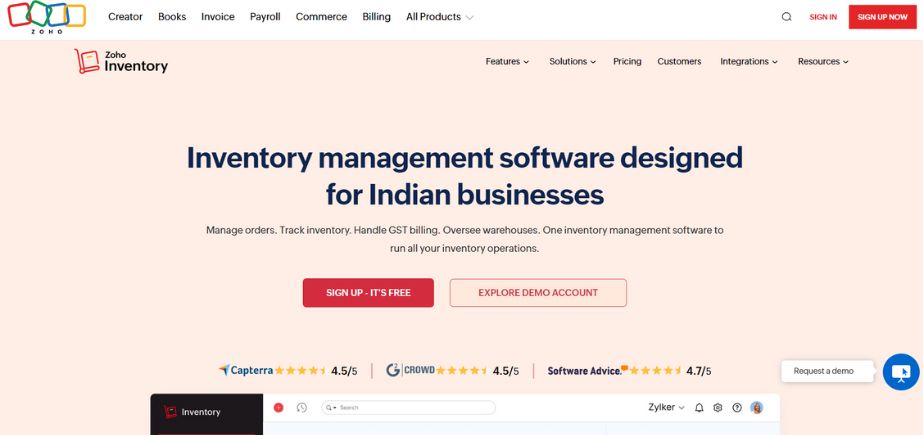
Zoho Inventory is an online platform meant for managing orders and inventory of small and medium companies. With the system, users can handle sales and purchase orders, keep track of inventory at all times, and automate the delivery of goods. Amazon, Shopify, eBay, and top shipping businesses can be connected to the software without difficulty.
Features such as scanning barcodes, keeping track of several batches, and working with several warehouses are part of it. Because the interface is simple, Zoho Inventory is easy to use and set up. Its reasonable price and useful features are what make the software ideal for startups and businesses that are expanding.
Key Features:
- Multichannel order syncing
- Barcode scanning support
- Integrated shipping solutions
- Stock level alerts
- Warehouse and batch tracking
Pros:
- Affordable pricing
- Easy to implement
Cons:
- Limited advanced automation
- Not ideal for complex supply chains
Pricing:
Free plan available; paid plans from $59/month
Who should use it?
Small to medium businesses looking for budget-friendly OMS.
4. Shopify Plus
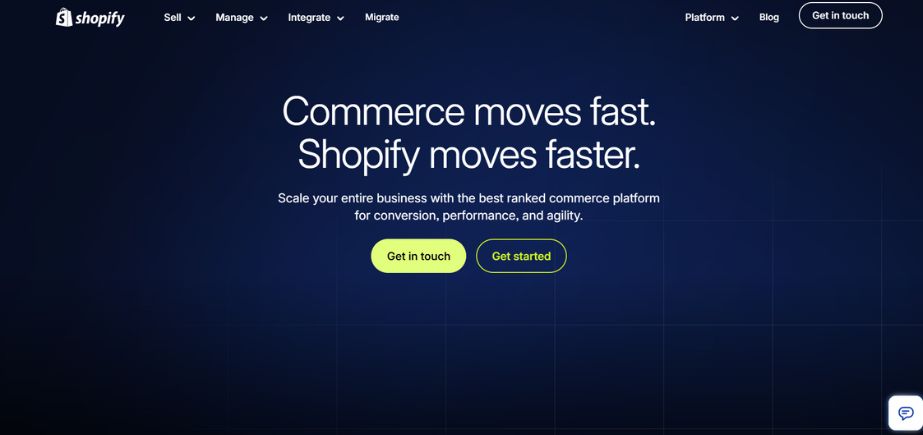
Shopify Plus is the advanced version of Shopify meant for businesses with big eCommerce sales. The inventory and purchases made through various channels are synchronized using the provided order management functionality. Thanks to its flexible APIs, it can be adjusted in many ways and linked to third-party systems. Businesses can use automated actions, operate on a worldwide level, and receive help at any time of the day.
With Shopify Plus, it becomes very simple to manage activities such as flash sales, orders from businesses, and changing currencies. This makes it perfect for growing online businesses that look for a smooth OMS and want it to blend naturally into the eCommerce environment to benefit both growth and customer satisfaction.
Key Features:
- Real-time inventory sync
- API-first architecture
- Bulk order management
- Custom checkout experiences
- Multichannel fulfillment tools
Pros:
- Fast setup and user-friendly
- Strong ecosystem for eCommerce
Cons:
- Limited B2B features
- Costs add up with apps/add-ons
Pricing:
Starts at $2,000/month
Who should use it?
eCommerce brands with high-volume sales and fast-scaling needs.
Suggested Blogs:
5. Brightpearl

Brightpearl has been developed as an order management system for retailers and wholesalers who run operations through different channels. It helps you understand sales, the amount of inventory, and all customer data at the same time for all sales channels. With the platform, certain steps such as fulfilling orders, accounting processes, shipping, and handling inventory can be automated, which results in fewer mistakes.
Shopping from both online and brick-and-mortar sources becomes simple when they are connected. Since it offers ways to forecast demands, prepare reports, and work with suppliers, Brightpearl is a helpful tool for growing retailers. By focusing on automation and boosting performance, Brightpearl assists brands in growing in a profitable way while ensuring everything is controlled and transparent.
Key Features:
- Retail-centric order workflows
- POS and eCommerce integration
- Demand forecasting
- Real-time reporting dashboards
- Automated accounting
Pros:
- Built specifically for retailers
- Powerful automation
Cons:
- Complex onboarding
- Cost may deter smaller sellers
Pricing:
Custom quotes only
Who should use it?
Mid-sized retail and wholesale businesses.
6. Cin7
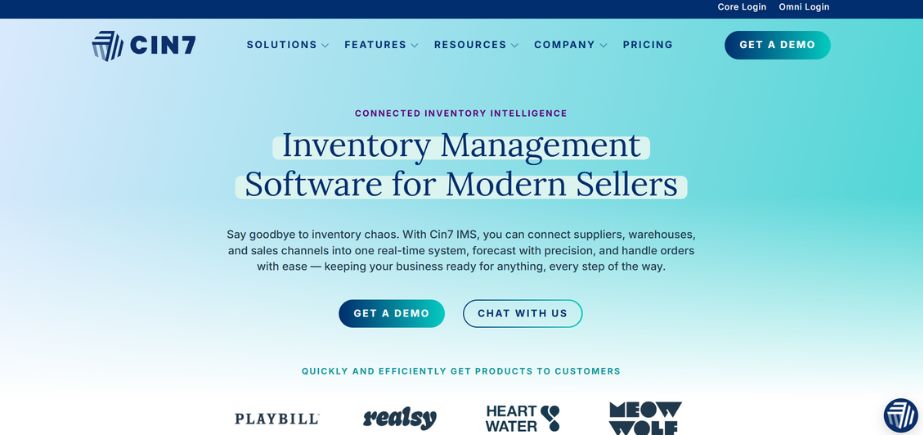
Cin7 is a fully featured cloud system that links products, sales channels, warehouses, and retail work together. The software is helpful for companies doing business-to-business and business-to-consumer (B2B and B2C), because it has built-in EDI systems, barcode scanning, and tracks stock in real-time. Cin7 is able to link with well-known platforms like Amazon, Shopify, QuickBooks, and similar ones.
It is strong because it organizes supply chain steps, manages many warehouses, and handles sending orders. The software suits businesses that manage sales of goods worldwide by letting them organize orders and stock, cut costs, and grow efficiently.
Key Features:
- EDI and third-party integrations
- Inventory syncing across channels
- B2B portal support
- Order automation workflows
- Warehouse management
Pros:
- Scalable across channels
- Built-in POS and B2B features
Cons:
- Learning curve for non-tech users
- Occasional sync delays
Pricing:
Starts around $325/month
Who should use it?
Product-based brands selling through multiple channels.
7. Skubana (by Extensiv)
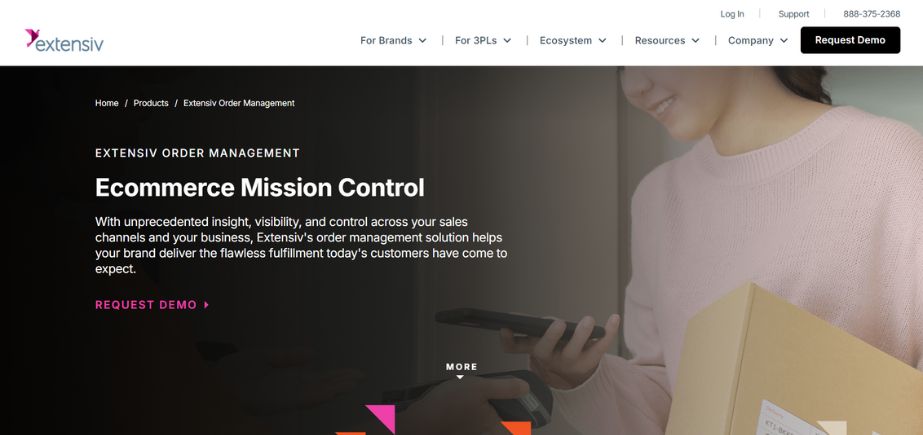
Now owned by Extensiv, Skubana is an advanced order and inventory solution made for eCommerce platforms that are growing quickly. It brings all marketplaces, third-party logistics, and sales channels under one system for clear automation of orders and checking the current inventory stock. There are automation features available for purchasing orders, predicting demand, and fulfilling them. The analytics dashboard supplies you with useful results on how the business is performing.
It is the right solution for companies searching to combine their back-office work and reduce errors. The thorough features and scalability enable Skubana to assist businesses during their growth on diversified platforms and channels by ensuring fast and accurate order processing and well-arranged logistics.
Key Features:
- Centralized order management
- Demand forecasting and analytics
- Automated PO creation
- Multichannel sales integrations
- Real-time dashboard
Pros:
- Excellent for scaling operations
- Strong reporting features
Cons:
- High initial cost
- Limited for non-eCommerce use cases
Pricing:
Custom pricing based on sales volume
Who should use it?
Growing eCommerce brands with complex logistics.
8. Orderhive
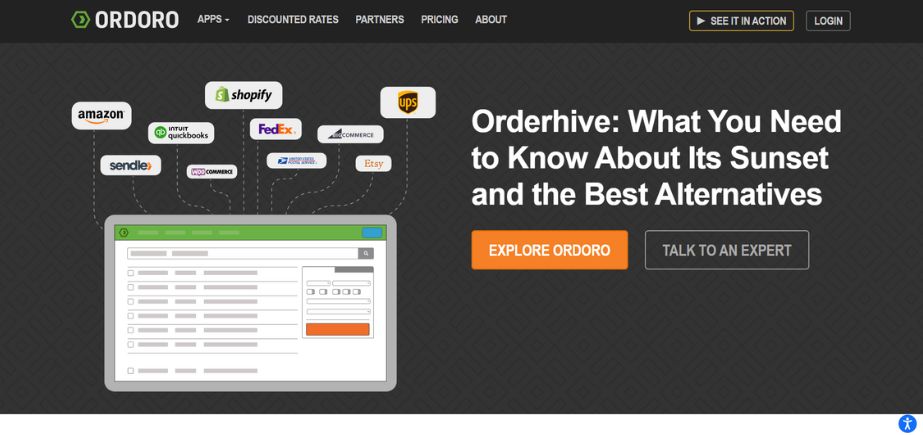
Orderhive is a cloud-based application made for SMEs and those selling on various platforms. It provides real-time updates of orders received from Amazon, eBay, Etsy, and also Shopify, and WooCommerce web stores. Orderhive takes care of order tracking, warehousing, creating and printing barcodes, and making invoices automatically. Individual users are able to work with several warehouses, create rules for automation, and receive news when items are low.
More than 300 carriers and platforms are integrated into Shipway to simplify both logistics and fulfillment. Because it is easy and inexpensive, Orderhive is most helpful for small and mid-sized companies that need a steady way to manage sales with no big technical setup.
Key Features:
- Multi-warehouse management
- Barcode scanning
- Automation rules
- Inventory syncing
- Integrated shipping carriers
Pros:
- Simple, intuitive interface
- Good value for money
Cons:
- Slower performance on large volumes
- Limited reporting customization
Pricing:
Starts at $95/month
Who should use it?
SMEs managing sales across marketplaces and platforms.
9. SAP Commerce Cloud
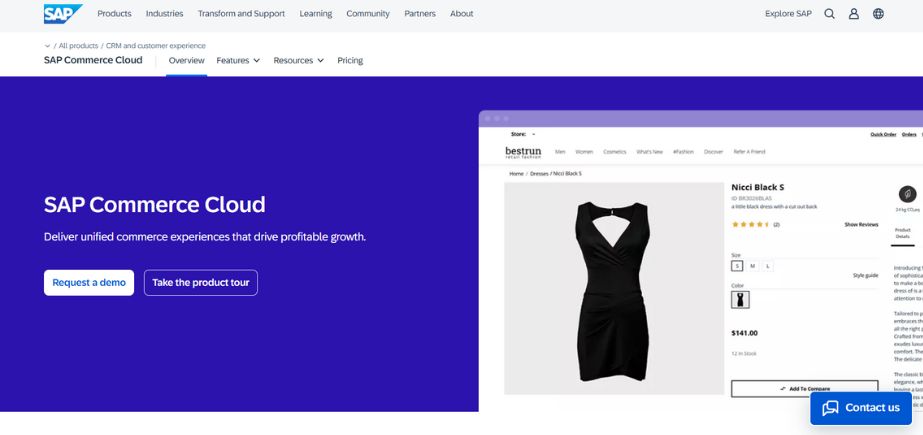
SAP Commerce Cloud is a powerful system for managing orders and commerce that gives full control from start to finish over customer orders via all channels. Because of this, companies can give each customer a personalized shopping experience, manage their inventory around the globe, make fulfillment easier, and handle various product combinations. As one component of SAP, it combines strongly with the finance, ERP, CRM, and supply chain modules.
Because of headless architecture, businesses are able to respond swiftly to changes in commerce. Designed for major companies, SAP Commerce Cloud encourages omnichannel solutions by using AI suggestions, running promotions, and guiding customers through various support routines for both businesses and consumers.
Key Features:
- Unified commerce management
- Flexible order orchestration
- Integration with SAP ERP
- Omnichannel fulfillment
- Scalable architecture
Pros:
- Ideal for global brands
- Deep customization
Cons:
- High cost and complexity
- Long implementation cycles
Pricing:
Enterprise-level pricing (custom quotes)
Who should use it?
Large multinational enterprises with complex order needs.
10. Veeqo (by Amazon)
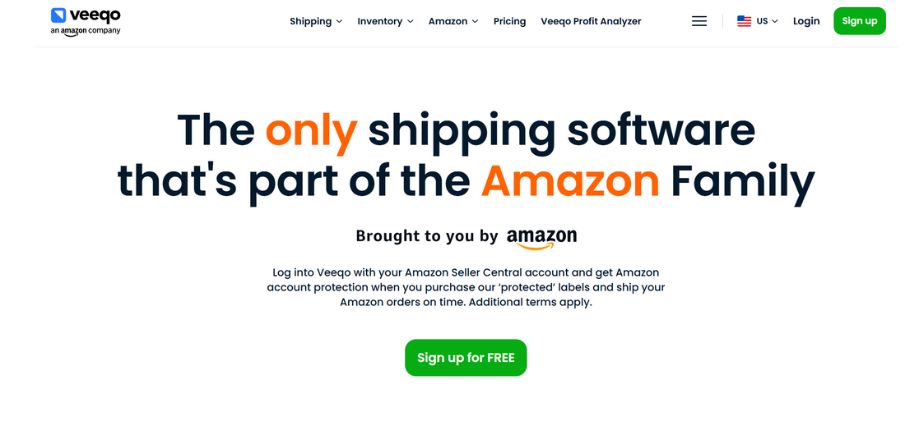
Veeqo is a useful ordering and shipping software for retailers selling on Amazon as well as other channels. Purchased by Amazon, it comes with free access to sellers on its marketplace and it can also be used with Shopify, eBay, and Walmart. All orders come together from any selling platform, shipping labels are made automatically, and handling returns is quick and simple with Veeqo.
In addition, it allows for shipping large orders, scanning items by barcodes, and keeping all devices linked to the live inventory. Navigating the dashboard is easy, which makes logistics simpler, faster, and guarantees fewer errors in work. Veeqo is perfect for online merchants on Amazon as it is backed by the platform and includes tools they are already familiar with.
Key Features:
- Amazon-native integrations
- Free shipping label printing
- Multi-channel inventory sync
- Returns management
- Analytics and reporting
Pros:
- Free for Amazon sellers
- Fast setup
Cons:
- Limited advanced features
- Prioritizes Amazon integrations
Pricing:
Free for Amazon sellers
Who should use it?
Amazon-first sellers and small to mid-sized eCommerce retailers.
Comparison Between the Best Order Management Software
Here is a comparison table in for the top 10 order management software platforms, covering features, pricing, use cases, and official websites:
| Software | Key Features | Pricing (Approx.) | Ideal Use Cases | Website |
| Salesforce Order Management | Real-time inventory, omnichannel fulfillment, workflow automation, AI insights | Custom/Enterprise pricing | Large enterprises with complex operations | salesforce.com |
| NetSuite OMS (Oracle) | Multichannel sales, automated billing, inventory sync, ERP integration | Starts ~$999/month | Mid-to-large businesses needing ERP integration | netsuite.com |
| Zoho Inventory | Multichannel orders, barcode scanning, shipping integration, real-time tracking | From $59/month | Small to medium businesses | zoho.com/inventory |
| Shopify Plus | Built-in OMS, flexible APIs, inventory sync, fast checkout | From $2,000/month | High-volume eCommerce businesses | shopify.com/plus |
| Brightpearl | Automation, POS integration, demand forecasting, real-time reporting | Custom pricing | Retailers and wholesalers | brightpearl.com |
| Cin7 | Inventory + OMS, warehouse support, EDI, multichannel B2B & B2C | From ~$325/month | Product-based businesses | cin7.com |
| Skubana (Extensiv) | Unified dashboard, automation, forecasting, multichannel | Custom pricing | Scaling DTC brands and eCommerce | extensiv.com/skubana |
| Orderhive | Multi-warehouse, barcode, automation rules, shipping integrations | From $125/month | SMEs with multichannel sales | orderhive.com |
| SAP Commerce Cloud | Omnichannel, ERP + CRM integration, scalable architecture | Custom/Enterprise pricing | Large global enterprises | sap.com/products/commerce.html |
| Veeqo (by Amazon) | Free for Amazon sellers, multichannel sync, bulk shipping, returns | Free (for Amazon users) | Amazon/eCommerce sellers | veeqo.com |
Conclusion
In short, having a large business and using more channels means you should choose a different order management system. If you need your organization to control and offer support on several channels, Salesforce Order Management and SAP Commerce Cloud will be reliable choices. If you want to enjoy flexibility and automated processes, both NetSuite and Brightpearl should be considered.
Zoho Inventory and Orderhive are chosen by both small businesses and startups since they are simple and affordable. If a company wants a dependable solution with many capabilities, Shopify Plus, Skubana, and Veeqo are worth thinking about. Firms that need warehouse and B2B solutions for their products can rely on Cin7. An effective order management software allows smooth performance of tasks, fewer mistakes, and content customers, all of which encourage continuous development in today’s digital market.
FAQs
1. What is order management software (OMS)?
With order management software, companies can monitor customer orders and handle them from ordering to receiving and exchanging them. It collects all inventory, processing of orders, and customer data in one place to make work easier.
2. Who should use order management software?
Sales of products, whether it’s done face-to-face or online, can make OMS a useful option for a business. Users who are eCommerce retailers, wholesalers, manufacturers, or manage more than one channel or warehouse are especially helped by it.
3. What are the key features of OMS?
Typical features include:
- Order tracking and fulfillment
- Inventory management
- Multichannel integration (e.g., Amazon, Shopify)
- Shipping and returns handling
- Automation rules
- Real-time reporting and analytics
4. How does order management software improve customer experience?
Because of order management software, you can supply your customers with speedier, more precise, and simplified deliveries, inform them of their orders in real-time, and make returns simpler, all of which result in greater customer satisfaction and trust in your business.
5. Can order management software integrate with other business systems?
The majority of OMS systems are able to link with ERP, CRM, commerce websites, account software, and shipping systems for the smooth running of business processes.
